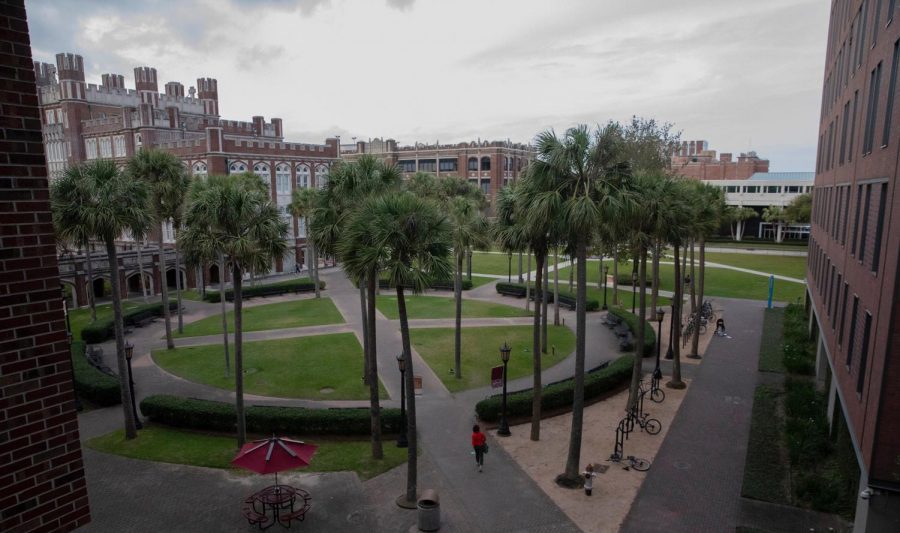Letter: If Loyola’s student body is so diverse, why isn’t the faculty?
Palm Court sits outside the Music/Communications Complex below a cloudy sky in late March 2020.
June 17, 2020
Dear Editor,
As a journalist, blogger, copywriter and communicator of information to the public, I use writing as a tool daily in my professional life.
I mostly tell the stories of others, as I did in the fall of 2015 when I was news editor of The Maroon. That semester, I chose to focus the lengthiest and most in-depth article of mine on Loyola’s Princeton Review ranking, which was #2 for “lots of race/class interaction.” This spoke to the diversity of the student body; in the 2014-2015 school year, 40% of the undergraduate student population were members of minority groups.
In my article, The Faces of Race, I interviewed nine minority students across multiple generations who had or were currently attending one of three New Orleans universities with differing levels of diversity.
I set out to amplify their voices, to hear firsthand their accounts of what it’s like or was like to be a minority student. But I remember that I was left feeling unsatisfied because, while Loyola had a diverse student body, only 13% of faculty at the time were members of minority groups.
As a black student reporting this story, I remember feeling like I had to tiptoe around race so as not to upset the university. Or maybe it was because I was aware of some of the accounts of my classmates at the time that were recently brought to light. I remember hearing those stories from my classmates, but I understood that it was just the way things were, and so I avoided certain professors within the SMC like the plague.
During my eight semesters at Loyola, I had two black professors and only a handful of other minority professors. Last year, within the 2019-2020 school year, minorities represented 18% of all faculty, just a 5 percentage point increase from 2014, while the student body remains to be nearly 44% belonging to minority groups.
Considering Loyola prides itself in diversity, and as a proud graduate of the institution and the School of Mass Communication (now the School of Communication and Design), I’m calling on Loyola to make a change. Seek out professors of color. Don’t tolerate discrimination. Take your students seriously. See, firsthand, that representation matters, and watch as your diverse student body begins to thrive, boundlessly.
– Lauren Saizan, A’17
All data sets were pulled from Common Data Sets available through Loyola University’s Office of Academic Affairs (see here).








